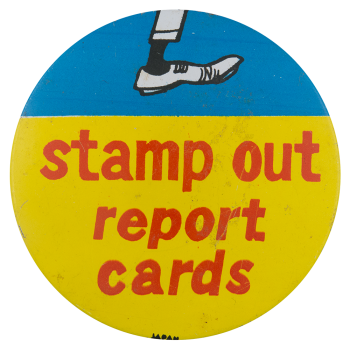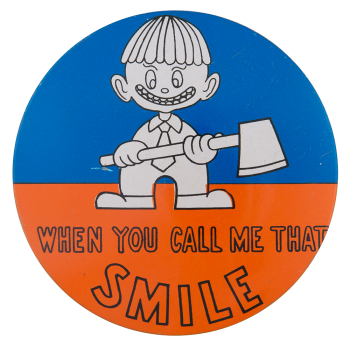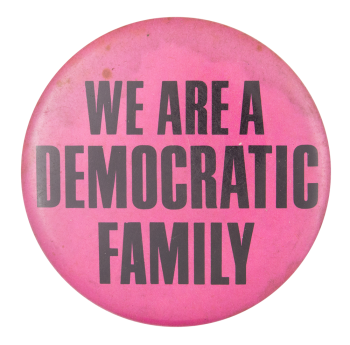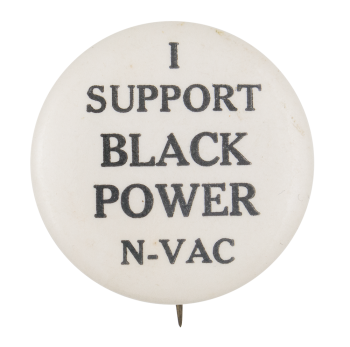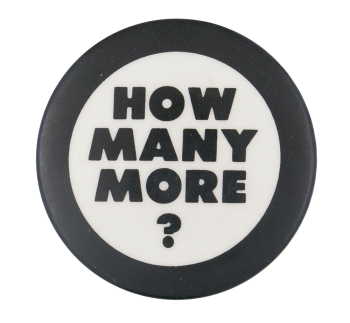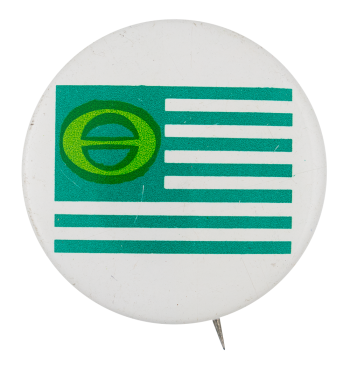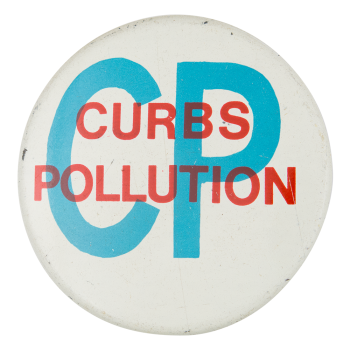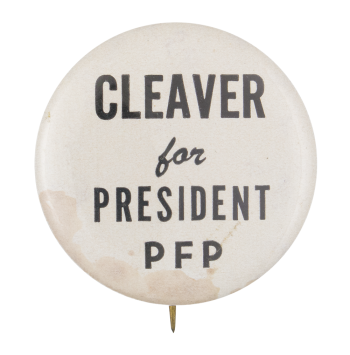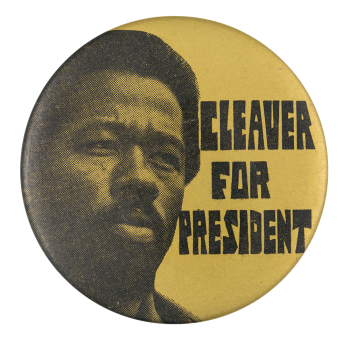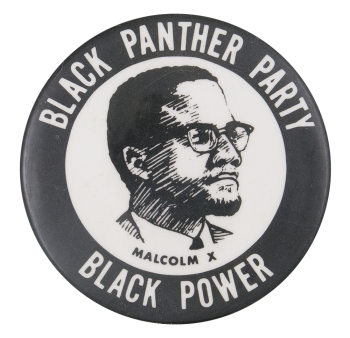Stamp Out Report Cards Large
| Category | |
|---|---|
| Additional Images | |
| Sub Categories | |
| Text on Button | stamp out report cards |
| Image Description | Illustration of a leg and foot on a blue background over a yellow background with red text |
| Curl Text | JAPAN |
| Back Style | |
| The Shape | |
| The Size | |
| Year / Decade Made | |
| Additional Information | Topps Co. was founded in 1938 and is most prominently known for creating sports trading cards. Today, Topps sells predominantly candy and sports memorabilia. In 1965, Topps began producing “Wise Guy” metal pins that featured satire for novelty and humor. Like the collectible sports cards, the buttons came in colorful packages and were sold for a nickel a piece. Though some buttons made by Topps came with its trademark bubble gum, “Wise Guy” pins did not. |
| Sources |
1965 Topps Wise Guy Buttons. (2016, September 24). http://toppsarchives.blogspot.com/search/label/1965 Baseball Trading Cards, Collectibles, and Memorabilia. (2018). https://www.topps.com/ Brian Drent's Mile High Card Co. (2017, September 15). 1956 Topps pin back baseball button checklist. https://www.milehighcardco.com/1965_topps_wise_guy_metal_buttons_nearly… |
| Catalog ID | HU0157 |

